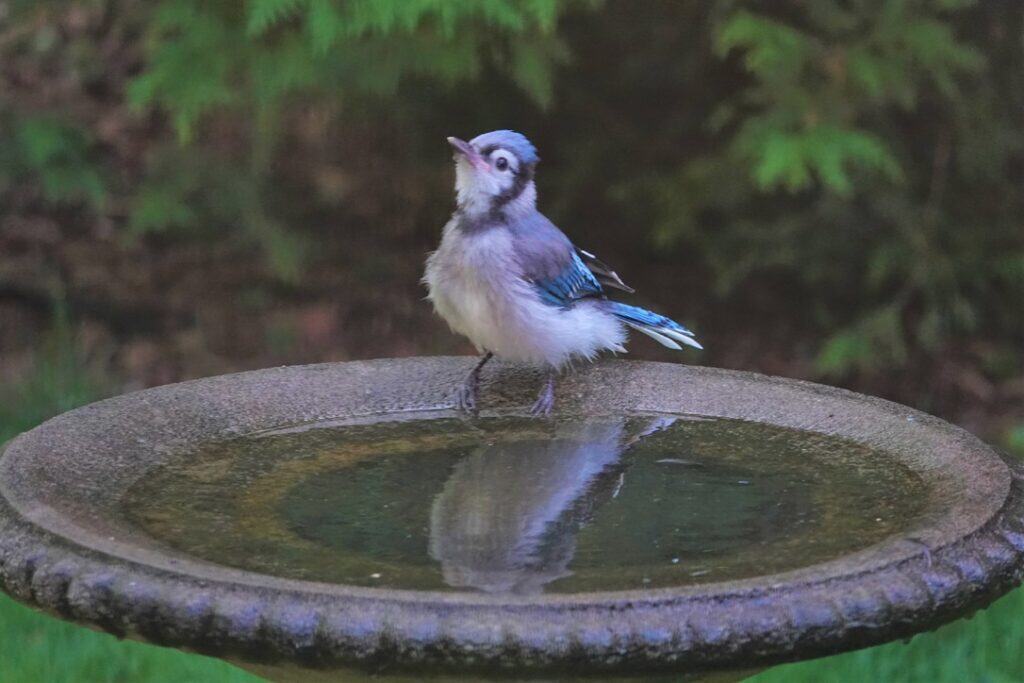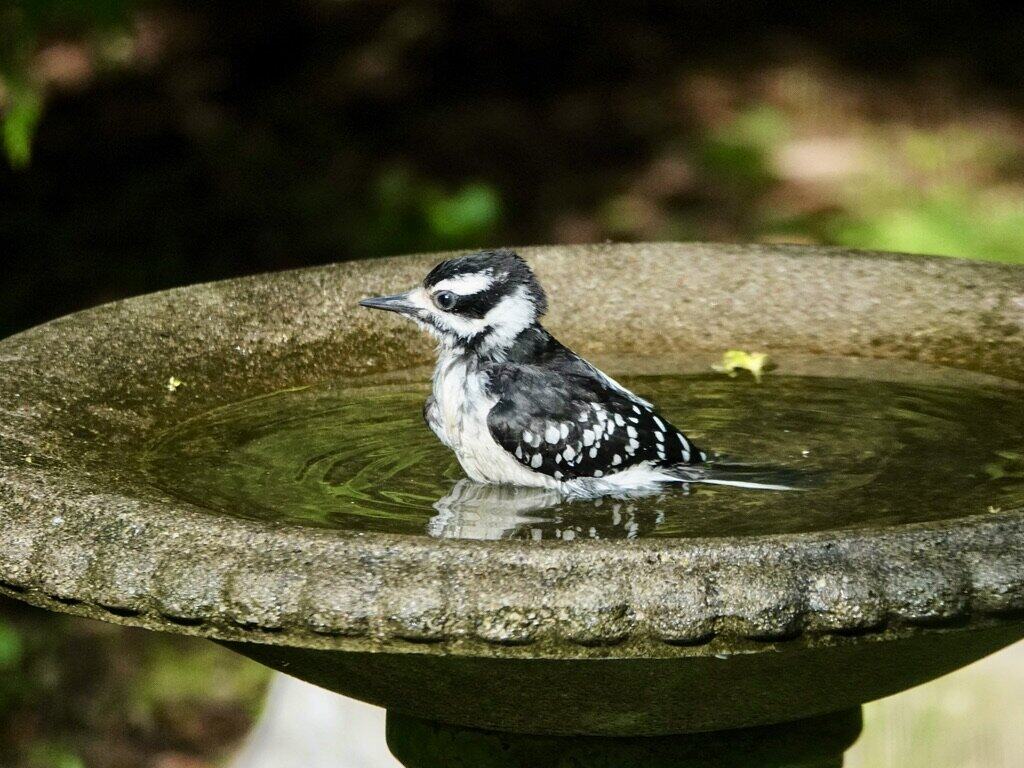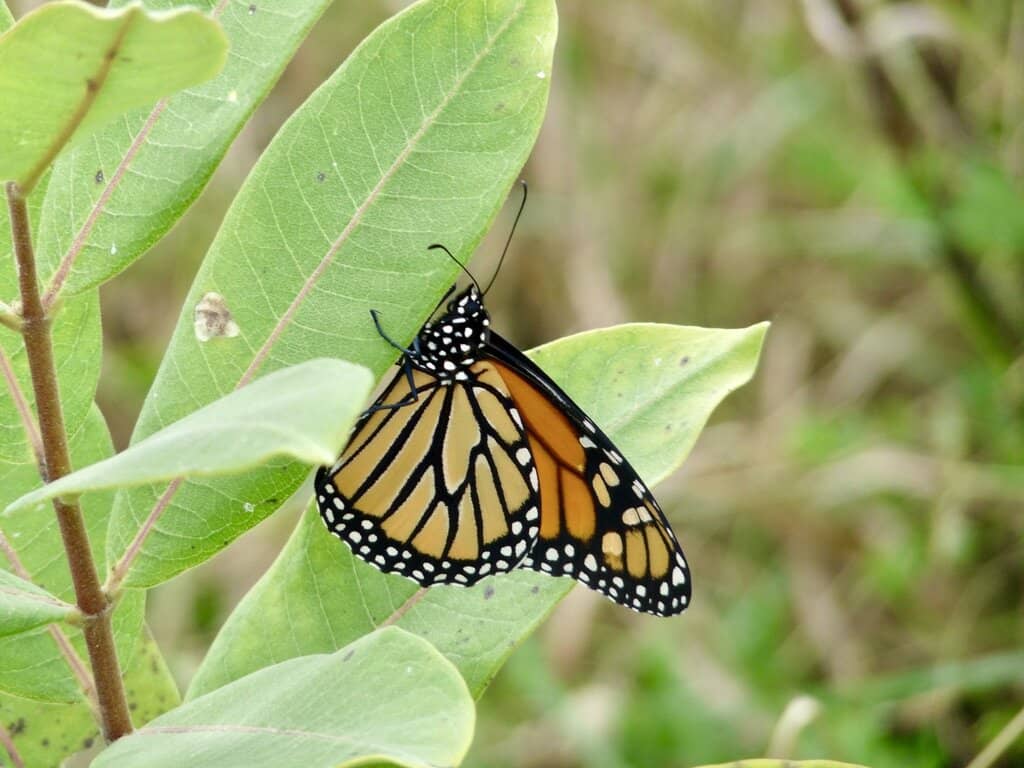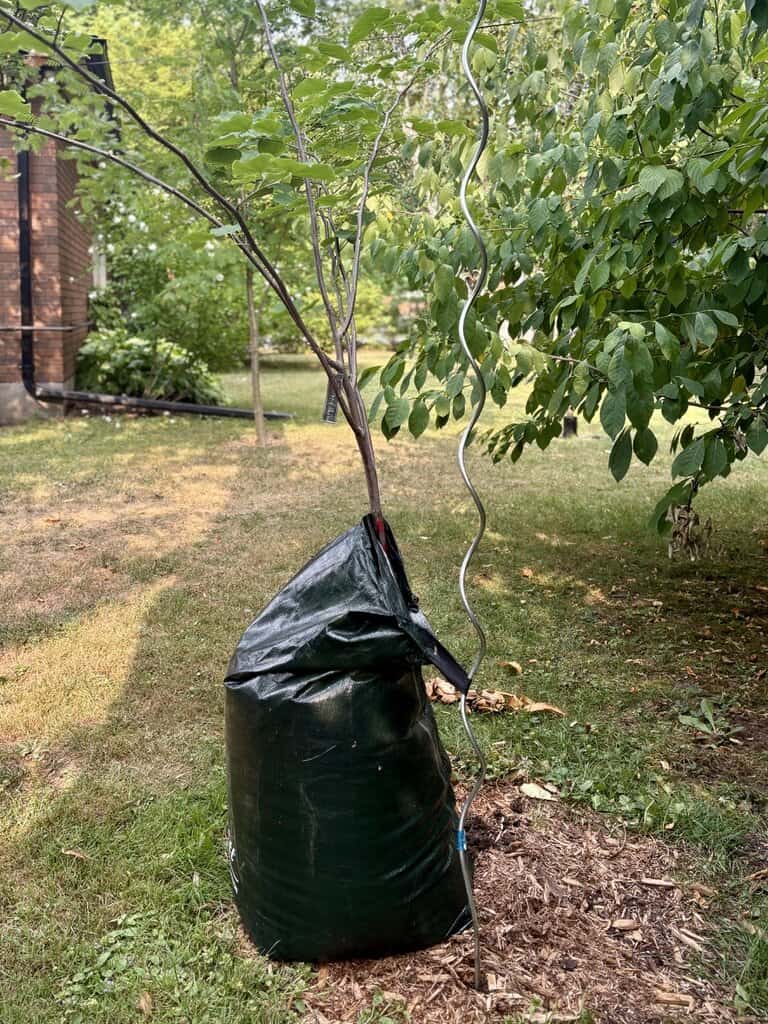Simple ways to aid trees, birds and pollinators weather water scarcity
Peterborough Examiner – August 8, 2025 – by Drew Monkman
Peterborough and the Kawarthas are in the grip of drought. Over the past 30 days, rainfall has been barely half the norm, while intense heat has been accelerating evaporation from soil and leaves. The effects are everywhere—gardens are wilting, young trees are dying, lawns have turned straw yellow, and many farmers are feeling the strain.
I often wonder how birds, mammals, and pollinators manage in such harsh conditions. What really brought the question home was the scene at our three birdbaths. Lately, they’ve become the hottest ticket in town, rivaling our winter feeders for sheer entertainment. Robins, chickadees, nuthatches, cardinals—you name it—are lining up for a sip and a splash. Even a red-eyed vireo stopped by. We’re refilling the baths up to three times a day just to keep up with demand.
Which makes you think: what’s driving all this aquatic frenzy—why aren’t the birds content with just a quick drink or two? And, with no significant rain in the forecast, how can we help plants and wildlife like birds and pollinators survive?

Adaptations to drought
During drought conditions, many bird species seek relief by spending more time in shaded habitats such as dense foliage, forest edges, and areas near wetlands where temperatures are cooler and humidity is higher. To conserve energy and reduce water loss, they often shift their foraging activities to the cooler hours of dawn and dusk. In extreme conditions, some birds may even abandon overly dry habitats altogether in search of better resources.
To some extent, water needs can be met through diet. Many insectivorous birds obtain moisture from their prey—such as caterpillars and beetles—but droughts can dramatically reduce insect availability, posing serious challenges for species like swallows, flycatchers, and chimney swifts that rely on aerial insects. Finches and other seed-eaters are more drought-tolerant due to their dry diets, but they must still find free-standing water to stay hydrated. Physiologically, songbirds cope with heat and drought by producing concentrated urine and cooling themselves by panting, though the latter increases water loss. Severe drought may also lead birds to delay or skip nesting, lay fewer eggs, or raise fewer young to conserve scarce resources.
Droughts affect mammals, too. Plants may die or stop producing seeds, berries, and leaves, forcing herbivores to travel farther to feed. This, in turn, impacts predators who rely on those prey species. Just this week, my wife found the remains of a rabbit that had been killed by a fox, leaving behind its distinctive scat. It leaves me wondering if the increase in our neighbourhood foxes is directly related to the drought.
Back to birdbaths
What we’re seeing at our birdbaths is a natural—and vital—response to drought. It’s a clear sign of how stressed birds are and how essential these water sources have become for their survival and comfort. A birdbath may be the only nearby water within a bird’s territory. By offering fresh water, you could be saving lives, especially for young birds, small species like chickadees, and migratory visitors. In just a couple of weeks, warblers and other migrants will begin passing through the Kawarthas, often stopping for a quick drink and splash before continuing their journey.
For birds, bathing is essential, not optional. During hot weather, birds lose more water through respiration and waste, even just sitting still. The hotter and drier it gets, the more they must replenish throughout the day. They bathe frequently to clean and align their feathers, which is vital for thermal regulation (important in hot, dry weather), flight efficiency and removing parasites and dust. Because birds don’t sweat, they not only rely on panting but also cooling through evaporation. Bathing helps them cool down quickly.
Some species are still nesting in August, including goldfinches, mourning doves, cardinals and cedar waxwings. Others, like robins, may still be feeding young. These birds need even more water for themselves and to digest high-protein diets (like worms or insects). Robins, jays and crows will also dunk food in water to soften it before eating.
Ideal Setup for birdbaths
Birds prefer baths with shallow water – especially shallow edges. The bath should be no more than 2–5 cm deep, so if your birdbath is deeper, add flat stones or bricks for easy perching and wading. Place the bath in partial shade to keep water cool and reduce evaporation and near shrubs or trees to give birds quick cover from predators.
Moving water, too, can attract more birds. Use a dripper or small solar fountain to create gentle movement. A simple DIY option is to hang a plastic bottle with a small hole above the bath so it drips slowly. To keep birdbaths safe during heavy use, empty and scrub them with a brush every few days in hot weather. You will also need to disinfect them regularly with a 1:9 bleach-to-water solution (or equal parts white vinegar) and rinsing thoroughly. Never use soaps or detergents. Concrete baths stay cooler than metal or plastic models. They can be purchased at Scott Concrete, on County Road 18 just west of Lakefield.

A toll on pollinators
Dry weather can also be tough on butterflies, bees, and other pollinators. Drought reduces blooms and nectar, forcing them to search farther for food. For monarchs, it also limits the growth and quality of milkweed – the only plant their caterpillars eat – leading to less reproductive success for this threatened species. Fewer flowers and host plants mean fewer pollinators, weakening the whole web of life.
You can help all pollinators by setting out shallow dishes or birdbaths with stones for insects to land on. With heatwaves and droughts becoming more common, it’s also important to plant drought-tolerant natives like coneflower, bee balm, black-eyed Susan, asters, goldenrod, milkweeds, and New Jersey tea a compact, drought-loving shrub with white blooms. Mulch and water key plants as much as possible.

Newly planted trees
Newly planted trees have shallow, undeveloped root systems, making them especially vulnerable to heat stress and drought. Without enough moisture, these young trees can suffer root damage, slowed growth, leaf wilting, and even death. More mature trees generally have deeper roots and can tolerate short dry spells better but may still need some watering.
Proper watering and mulching during drought greatly improves tree survival. Give newly planted trees 10–15 liters weekly, soaking deeply to encourage strong roots. Use soaker hoses or 20-gallon watering bags for slow delivery. These bags can be purchased online for less than $15. You should also add 5–8 cm of mulch (away from the trunk) to keep soil moist and cool. Water early or late in the day to reduce evaporation. Avoid frequent shallow watering which encourages roots to stay near the surface, where soil dries out quickly.

Request from the City
The City of Peterborough is asking residents to help water newly planted boulevard trees during hot, dry weather. The City installs and refills watering bags but may need extra help during heat waves. Residents can support tree survival by filling the bags once or twice a week, helping them develop strong roots and contributing to Peterborough’s green infrastructure and urban canopy. A healthy city tree canopy cools neighbourhoods, cleans the air, manages stormwater, stores carbon, and supports wildlife, while boosting property values and residents’ well-being. Protecting and expanding Peterborough’s canopy is vital, especially after heavy losses from the 2022 derecho wind storm, this spring’s ice storm, emerald ash borer, and other threats.
As this dry spell drags on, every drop of water we provide can make a difference. A birdbath, a shallow dish for pollinators, a well-watered young tree—these simple acts can mean survival for wildlife and help keep our green spaces alive, especially when multiplied across entire neighbourhoods.